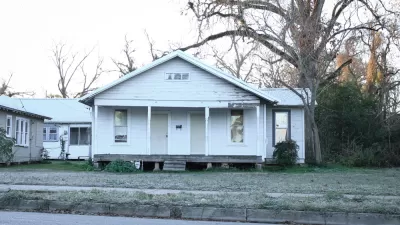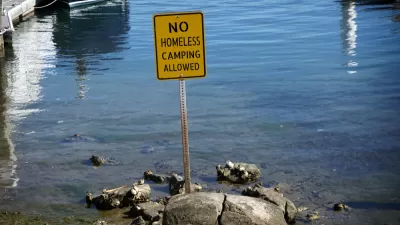The shortage of housing at all price points in the region is the main driver of high costs and the growing homelessness crisis.

In an op-ed in the Los Angeles Times, Michael Lens explains why building more housing, including market rate housing, is the best way to improve affordability and keep people from falling into homelessness.
“Despite investments in supportive housing and services, the number of Angelenos who struggle to stay housed has remained unacceptably high. Further, Black Angelenos are nearly seven times as likely to experience homelessness as the rest of L.A. County,” Lens writes.
To address the crisis, newly elected mayor Karen Bass has declared a state of emergency. “The declaration gives her power to convert hotel rooms into housing, sign master leases for entire buildings and expedite housing approvals. She is determined to see more temporary shelters and subsidized housing be built.”
But as Lens explains, “Moving people into temporary quarters might seem like the only quick solution, but any approach that relies on shelters runs counter to the research evidence that permanent housing solutions are both less costly and more effective.” In fact, “Getting people off the street makes only a small dent in the problem if those people are replaced by new distressed renters.” A bigger problem is the housing shortage in the region. Once zoned for 10 million housing units, the city is now zoned for only 4 million, not keeping up with its growing population.
Despite gentrification and displacement concerns, “Allowing more and faster production of market-rate housing can slow the pace at which rent rises and make our housing subsidy dollars go further.” Lens argues that “If we build new housing, the neighborhood will still change, but incoming renters have somewhere to go that’s not already occupied.”
Considering that building subsidized housing for all who need it is likely an unrealistic goal, Lens writes, promoting more housing construction of all types is the next best solution to the housing crisis.
FULL STORY: Op-Ed: How do we keep L.A.'s housing costs affordable? Build more homes

Study: Maui’s Plan to Convert Vacation Rentals to Long-Term Housing Could Cause Nearly $1 Billion Economic Loss
The plan would reduce visitor accommodation by 25,% resulting in 1,900 jobs lost.

Alabama: Trump Terminates Settlements for Black Communities Harmed By Raw Sewage
Trump deemed the landmark civil rights agreement “illegal DEI and environmental justice policy.”

Why Should We Subsidize Public Transportation?
Many public transit agencies face financial stress due to rising costs, declining fare revenue, and declining subsidies. Transit advocates must provide a strong business case for increasing public transit funding.

Paris Bike Boom Leads to Steep Drop in Air Pollution
The French city’s air quality has improved dramatically in the past 20 years, coinciding with a growth in cycling.

Why Housing Costs More to Build in California Than in Texas
Hard costs like labor and materials combined with ‘soft’ costs such as permitting make building in the San Francisco Bay Area almost three times as costly as in Texas cities.

San Diego County Sees a Rise in Urban Coyotes
San Diego County experiences a rise in urban coyotes, as sightings become prevalent throughout its urban neighbourhoods and surrounding areas.
Urban Design for Planners 1: Software Tools
This six-course series explores essential urban design concepts using open source software and equips planners with the tools they need to participate fully in the urban design process.
Planning for Universal Design
Learn the tools for implementing Universal Design in planning regulations.
Smith Gee Studio
Alamo Area Metropolitan Planning Organization
City of Santa Clarita
Institute for Housing and Urban Development Studies (IHS)
City of Grandview
Harvard GSD Executive Education
Toledo-Lucas County Plan Commissions
Salt Lake City
NYU Wagner Graduate School of Public Service





























